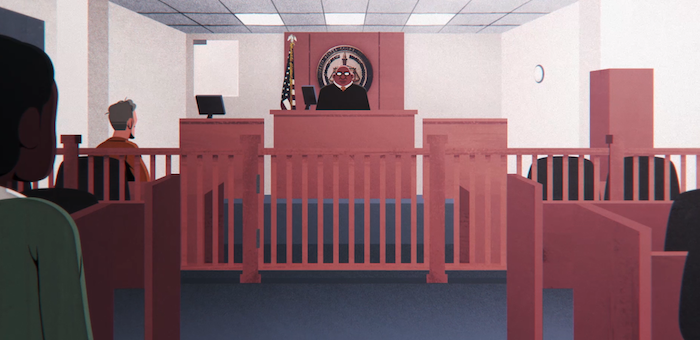Published November, 2020 by Jackie Zammuto in ICE
Case Study: Using Cell Phone Video in Cancellation of Removals
This case study is part of the WITNESS Video as Evidence Guide: Immigration. You can find the full guide here.
CELL PHONE VIDEO ADMITTED AT MERITS HEARING IN A SUCCESSFUL CANCELLATION OF REMOVAL CASE, NEW YORK IMMIGRATION COURT (2019)
In a Fall 2019 case out of New York City, an immigration lawyer working at a non-profit received a text message containing a video clip of an incident involving her client. She used the video to persuade the court to cancel a removal order against her client.
The case was a non-LPR cancellation of removal case based on the Violence Against Women Act (VAWA) – and the video evidenced a centrally relevant point in the case: her client was a victim of domestic violence as corroborated by a violent incident captured on video. The challenge was the attorney received the video from a witness to the incident a day before the hearing; meanwhile her client was in immigration detention in another state and would only be appearing in court via Video Teleconference (VTC) the next day.
The immigration attorney quickly had a technician at her organization save a copy of the video on two DVDs and on her laptop which she brought with her to court. She intended to submit the clip in a format the court would accept and watch. She prepared a motion to accept late-filed documents, though she ultimately ended up orally summarizing what was shown in the video evidence and why it was relevant to the case. See the motion further below. In order to qualify for non-LPR cancellation of removal based on VAWA, the non-LPR must have been subjected to battery or extreme cruelty by a USC or LPR spouse. The video was relevant, the lawyer argued, as her client was continuously subject to verbal threats and physical menacing by their spouse and the incident captured on video was an example of their USC spouse’s violence against her client.[1]
While the New York Immigration Court had not received the video evidence until the day of the hearing, they were open to viewing it. The Court, however, was not able to play the DVD on any court computers as their devices did not have DVD reading capabilities; eventually the judge and the DHS attorney watched the video multiple times on the removal defense attorney’s laptop. The DHS lawyer objected as to the fact that the government had not received the video evidence any earlier. The immigration lawyer, however, argued that her client being in detention made it difficult for her to receive it any sooner, and elaborated on the challenges of preparing a removal case while a client is detained, and as such, should be afforded latitude in presenting late evidence.
Prior to the hearing, the lawyer reviewed the video with her client via a private VTC conversation. She intended to try to have her client that appeared via VTC authenticate the video by watching it on her laptop from the detention center. This approach was technically difficult and ultimately did not work. Thinking quickly, the attorney instead asked the client to authenticate the video by eliciting a few questions from them about the circumstances leading up to the incident and then the client attested to what happened during and after the roughly 10 second video. Fortunately, the attorney had already elicited questions regarding the incident during direct examination.
The attorney asked the court to give the video evidence the highest weight as it was very probative and directly relevant to a material issue in the case (that her client was battered at the hands of a US citizen); and it was reliable, as it did not appear to have been tampered with. She reminded the court that her client had already testified to the circumstances leading up to the incident, and was able to authenticate by describing who took the video, who appeared in the video and the events that took place that day. The attorney also explained step-by-step to the court how the short clip went from the cell phone of the witness who filmed it to her laptop. The court ultimately granted her client’s application for cancellation and relied upon the video during his oral decision.
The attorney attributed the case’s success in large part to the video footage. As a former criminal defense attorney, she was also comfortable with how to lay a foundation for the evidence. She stated that the judge was also familiar with evidentiary practices from his experience in the criminal court context and was not taken by surprise by her video submission. Read this case study in the full Video as Evidence guide here.
[1] The video cannot be shared due to the privacy and security of the client involved.
SAMPLE FILES
Feature Image: Still from We Have Rights by Brooklyn Defender Services and ACLU. Produced by MediaTank and Variant Strategies.

